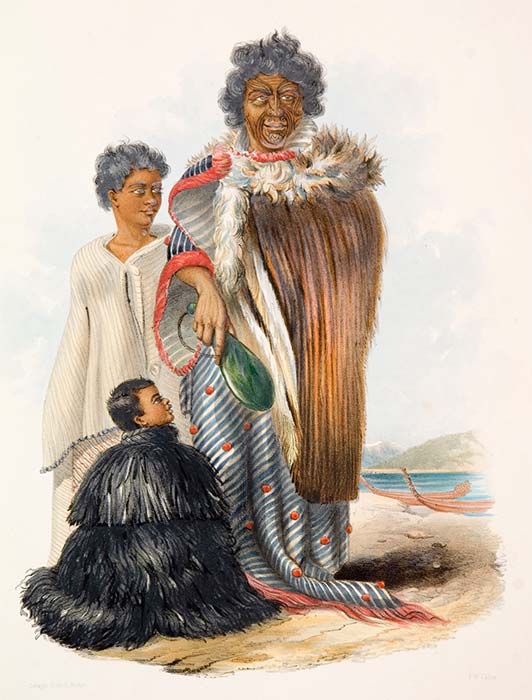
This lithograph by George French Angas, from about 1847, shows several examples of cloaks worn by highborn Māori in this period. Te Mutu, a chief of the Ihutai hapū of Ngāpuhi, wears a richly coloured dog-skin cloak over a very beautiful and rare type of muka (flax-fibre) cloak called a waihīnau (so-called from the dyeing process which used a solution of hīnau bark). This cloak has black- dyed whenu (warps or lengthwise threads) with undyed wefts (horizontal threads) creating a pattern across the body of the cloak that is further embellished with widely spaced red ngore-ngore (pom-poms) and closely looped bands of bright red wool bordering the side fronts. He carries his greenstone mere as part of his dress. The chief’s elder son Patuone wears a garment almost white in colour, described by Angas as a kaitaka of ‘silk-like flax’ (although no customary taniko borders are seen), while the younger son Te Kurī is wrapped in a black rain cape, that was also dyed using the hīnau bark and paru mud process. Angas describes this as 'impervious to the rain, which runs off it as from the thatched roof of a house'.
Using this item
Auckland Art Gallery – Toi o Tāmaki
Reference:
2009/16/6.1-2
Hand-coloured lithograph by George French Angas
Permission of Auckland Art Gallery Toi o Tāmaki must be obtained before any re-use of this image.









Add new comment